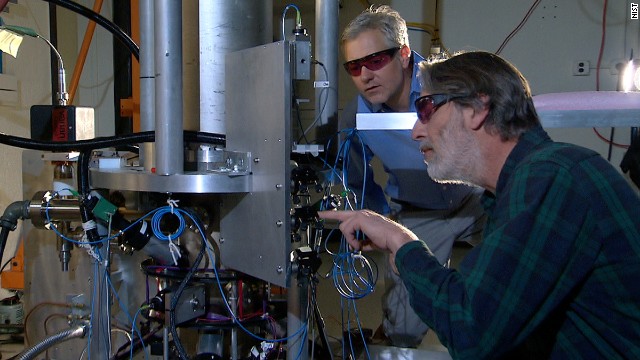As if timekeeping in the U.S. wasn’t already pretty accurate, the U.S. Department of Commerce’s National Institute of Standards and Technology (NIST) just declared a new atomic clock, the NIST-F2, to serve as a new U.S. civilian time standard.
Currently, the U.S. uses the NIST-F1 standard only, but this new atomic clock would remain consistent (without gaining or losing even one second) for about 300 million years. That makes it about three times more accurate than the NIST-F1 which has been the U.S. standard for 15 years.

New atomic clock based on a “fountain” of cesium atoms will serve as the next U.S. civilian time standard. (Image via NIST)
NIST-F2 has been under development for 10 years. It is the latest in a series of cesium-based atomic clocks developed by NIST since the 1950s.
Even though it’s more accurate than the NIST-F1, the current plan is to run both the F1 and F2 simultaneously to help cultivate long-term comparisons of the two clocks which can lead to even more improvements over time.
How do these clocks work?
Both NIST-F1 and NIST-F2 measure the frequency of a particular transition in the cesium atom—which is 9,192,631,770 vibrations per second, and is used to define the second, the international (SI) unit of time.
One main difference between the two is the F1 operates near room temperature (about 80ºF) while the atoms in the F2 remain in a cold environment at -316ºF. The cooling lowers the background radiation and reduces some of the small measurement errors.
For a detailed explanation of how the NIST-F2 works, watch the video below.
Why do we care?
Many technologies we currently use, such as cell phones, GPS, and the electric power grid, rely on the high accuracy of atomic clocks. It’s been noted that over the years, improved timekeeping has actually led to technology improvements and innovations.
“If we've learned anything in the last 60 years of building atomic clocks, we've learned that every time we build a better clock, somebody comes up with a use for it that you couldn't have foreseen,” says NIST physicist Steven Jefferts, lead designer of NIST-F2.
The NIST official time is used to time-stamp hundreds of billions of dollars in U.S. financial transactions daily. It is also distributed to the public through the Internet Time Service, which actually receives about eight billion automated requests per day to synchronize clocks in computers and network devices.
For more information visit NIST.
Advertisement
Learn more about Electronic Products Magazine





